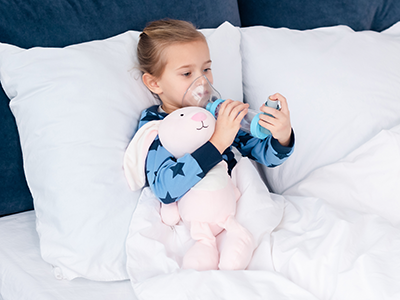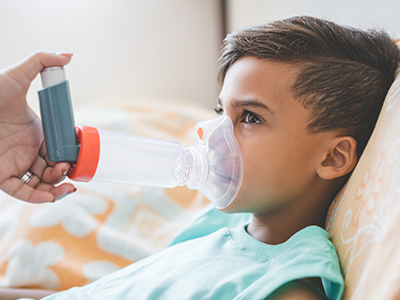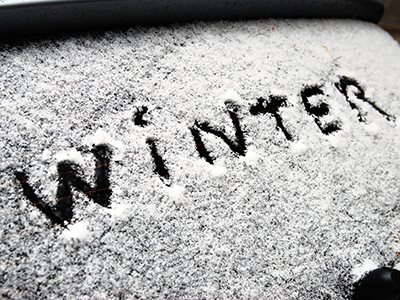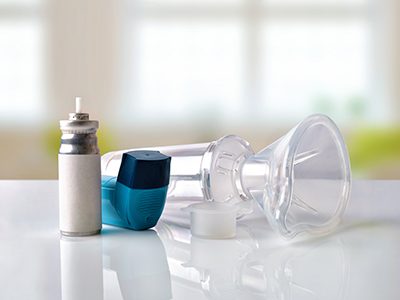An asthma flare-up or “attack” can be overwhelming for a child. Flare-ups occur when the airways tighten in reaction to a trigger such as pollen, dust, smoke or exercise. Your child might have coughing, trouble breathing, wheezing or chest pain. When this happens there are steps you can take to keep your child calm and help guide him or her through a difficult episode. Here are the immediate steps for managing a flare-up.
- Administer medicine. If you have access to quick-relief asthma medicine, like albuterol, administer it immediately. If your child uses an inhaler, it will work best with a spacer. You should see an improvement in breathing within 15 minutes. Instructions on how to use an inhaler with spacer can be found here.
- Help your child stay calm. It’s helpful to keep your child as calm and relaxed as possible because anxiety can make asthma worse. You can take the lead and set an example by remaining calm and collected as well.
- Get away from the trigger. If you can identify the trigger that caused the flare-up, whether it’s grass, smoke or animals, remove your child as quickly as possible from the source. If your child is experiencing a flare-up because of exercise, immediately stop the exercise, and help him or her rest. From time to time, you may not be able to get away from some triggers, like colds. In these cases, it may take longer for symptoms to completely resolve. Colds are common triggers, so administer medicine at the first sign of a cold, and every four to six hours to prevent the cold from causing a serious flare-up.
- Monitor your child. If your child’s condition improves, keep an eye on him or her over the next couple of days. Symptoms may continue, or there may be a second phase to the flare-up, which could potentially be more severe than the initial symptoms. Avoid triggers and keep medicines on hand to administer every four to six hours if needed.
- Seek medical attention. If your child continues to experience severe asthma symptoms shortly after administering medication, seek immediate medical attention by calling 911. Call your healthcare provider if your child is not clearly improving within a couple of days, or you have any concerns or questions about their treatment.
Lastly, it’s important to know the necessary and most used asthma medications. The two types of medication for asthma care are quick-relief medicines (usually albuterol) and controller medicines (usually an inhaled corticosteroid). Albuterol provides quick relief of asthma symptoms by relaxing tight bands of muscle that can squeeze down around the airways. This is what you use when your child is exposed to a trigger and symptoms start to flare up. An inhaled corticosteroid is an anti-inflammatory used to prevent flare-ups by reducing swelling and sensitivity inside the airways over time. It will not help to immediately quell your child’s symptoms.
Ask your healthcare provider about creating an Asthma Action Plan for your child. This will outline your child’s specific medicines, triggers and steps to take to prevent and manage asthma flare-ups at home and at school, so your child can stay healthy and participate in all the activities he or she loves!
 https://riseandshine.childrensnational.org/wp-content/uploads/2020/02/Large-Group-of-People-Celebrating-feature.png
300
400
Rise and Shine
https://riseandshine.childrensnational.org/wp-content/uploads/2017/11/childrens_riseandshine_logo.jpg
Rise and Shine2024-02-27 07:00:312024-02-27 09:36:48Celebrate Rare Disease Day
https://riseandshine.childrensnational.org/wp-content/uploads/2020/02/Large-Group-of-People-Celebrating-feature.png
300
400
Rise and Shine
https://riseandshine.childrensnational.org/wp-content/uploads/2017/11/childrens_riseandshine_logo.jpg
Rise and Shine2024-02-27 07:00:312024-02-27 09:36:48Celebrate Rare Disease Day













Leave a Comment
Want to join the discussion?Feel free to contribute!